A mitti ka ghar: Concluding the story of a Delhi couple’s tryst with farm life
They’d bought the land and sown the seeds. Now it was time to build a house. But natural materials were proving hard to find. Even harder was finding experienced labour.
We had found our dream plot and begun the battle of trying to grow our own food. We had slowly adjusted to the rhythms of weekend farming. We had learnt the hard way that there were no easy ways out, and absolutely no guarantees, when it came to field work.
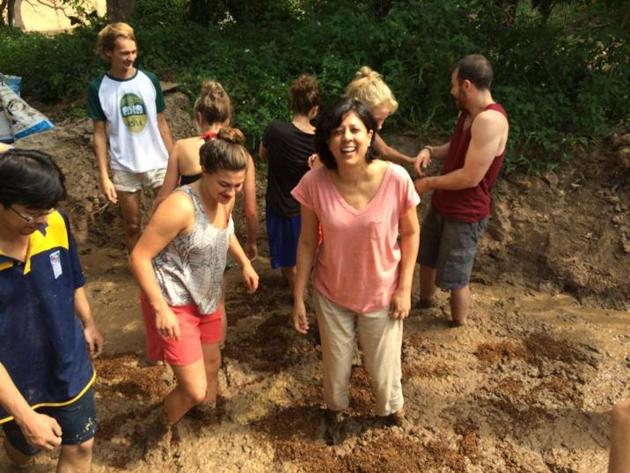
Even as our lessons in the School of Agriculture continued, it was time for the School of Architecture. I wanted on our farm a little hut where we could sit and watch the yellow flowers on our bhindi grow, as we sipped our tea. I didn’t want a fancy farmhouse with uniformed security guards, a tennis court, water-intensive grass and exotic trees that had no relevance to the ecosystem. If we were going to build, we were going to build responsibly.
This began to feel even more important as the sea of amoebic concrete slowly ate away at the edges of the soothing green fields around us. Fields free of the ugly stamp of so-called development were now a rare sight as we drove from the city to our plot in rural Haryana.
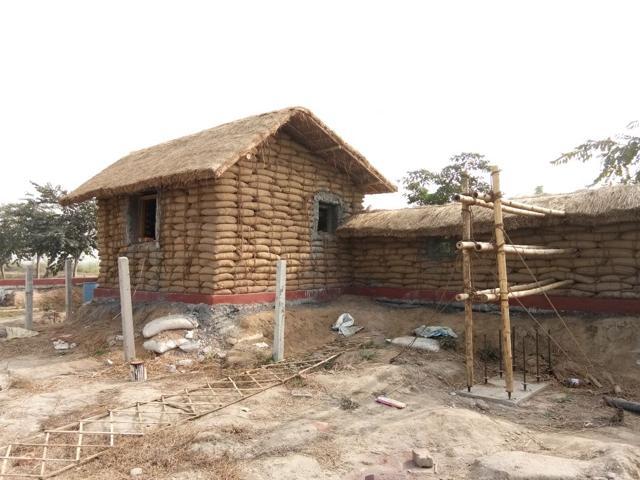
On my 2-acre ‘lets-deny-development’ project, I especially wanted to ensure that I did not contribute to the construction dust.
The plan was to build with natural materials. I said no to using bricks that scoop out fertile topsoil and are then baked in polluting kilns. I wanted to avoid cement, the third-largest contributor to carbon dioxide emissions in the world. I didn’t want to construct a house that would be a guzzler of water and electricity. I didn’t want to fence off the property. I wanted the biological processes, wind and water, to flow freely rather than be blocked by an ugly structure that would stop the ants from moving in a straight line, the black ibis from flying in or even the odd nilgai from straying in to chew on some plants.
We wanted to use thatch and we wanted to be off the grid. It soon became clear that every step would be a struggle. Bricks are far cheaper to source than mud; architects stared at us, mouths agape, when we said ‘no cement’.

‘Our economy is so geared towards quick and cheap that we are taught it’s far tougher to build green and much easier to use materials that are bad for the environment. Cement and brick are available everywhere in large sacks, but natural sand and mud are becoming harder and harder to source.’
When we finally found a few architects who shared our philosophy, they turned out to be far too expensive. They worked on big-budget projects and economies of scale. We were weekend farmers with slim margins. No one seemed to want to waste their time with us and our ‘mitti ka ghar’.
We finally found our dream team in architects Kamal Chawla and Anshu Sharma, from an organisation called SEEDS (short for, Sustainable Environment and Ecological Development Society). They were pioneers in locally appropriate and resilient construction, had won awards for their work, and shared our utopian ideals.
Anshu and Kamal had worked in high-altitude terrains like Ladakh and Jammu as well as in disaster-prone regions in Nepal. While mud and bamboo construction was familiar to them, working in rural Haryana was going to be a first. We met in coffee shops across Delhi to finalise our design elements, huddling over photos of wobbly mud buildings from the internet. It seemed as if only hippies in the West liked working with mud. But I loved the fact that when you work with mud, there are no straight lines, the walls are uneven, like homes for odd-looking gremlins. As the coffee flowed, my excitement grew.
I went to Thailand for a course on responsible architecture, conducted at a small farm. I spent a fortnight with a team of enthusiastic people from around the world. My co-learners were a motley group — one man was making his way back to Japan by land, there was a tour guide from Australia who lived in a bus, a teacher from England who wanted to green her garden the permaculture way, and a government officer from Hong Kong who was looking to start a green movement in people’s balconies. Each was there to learn how he or she could change the way we live today.
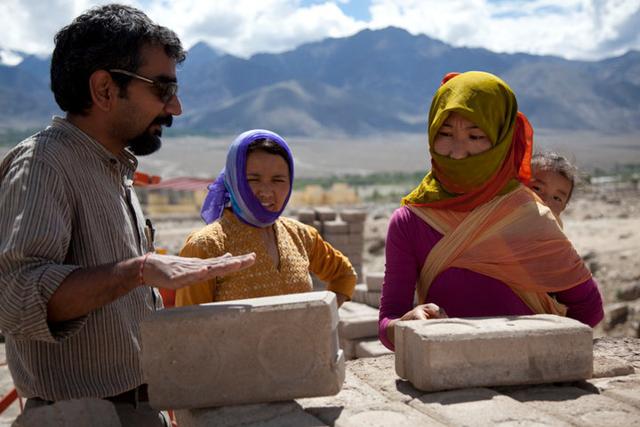
We learnt how to stomp about in a mud pit to make adobe bricks, build a compost pile which was then attached to a water pipe to give us heated water. We learnt how to use mulch to nourish a garden patch; we built with our bare hands an organic café with mud-washed walls at a local government school.
Armed with fresh knowledge, I returned ready to realise our dream of a mitti ka ghar. With our maverick team in place, we began construction.
Mud, a mixture of earth and water, is economical, practical, functional and attractive. Mud is especially useful in hot and humid climates. The world’s first cities, in Iran, India, Nepal and Yemen, were built using forms of earthen construction.
And yet today, our economy is so geared towards quick, cheap and destructive that we are taught it’s far tougher to build green and much easier to use materials that are bad for the environment. Cement and brick are available everywhere in large sacks, but natural sand and mud are becoming harder and harder to source. We found masons eager to work with the former, and not one in the vicinity who knew how to work with natural materials.
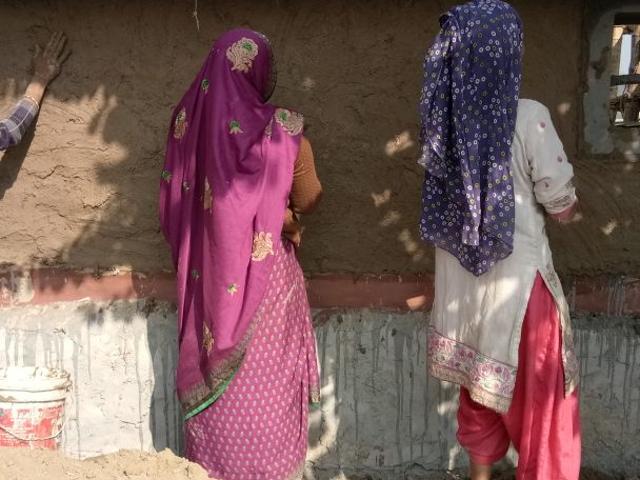
We finally found a mason-cum-contractor who had some limited knowledge. He became crucial. And then, like all construction work in India, we found that our plans were being held to ransom by this one man. A week rolled into months and only 20 per cent of our earthen boundary wall was complete. He took six months to build that one section — in the same amount of time, five-storey buildings were completed in Delhi.
We watched in horror as our savings depleted while he prospered. It was time to act. We had to change the team and gradually learnt how to negotiate the web of nefarious contractors and material suppliers.
Our architects Kamal and Anshu, watching our depleting savings, generously reduced their fee in support of our cause to build responsibly. Soon things began to turn in our favour and our ‘Great Wall of China’ was up. We had learnt where to find skilled labour, where to source fresh bamboo, how to do things responsibly but fast. We were now acing it in the School of Responsible Architecture.
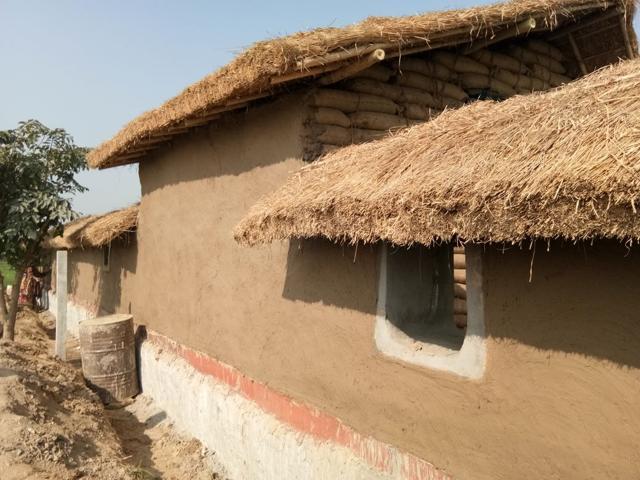
This week we will start mud-washing our Great Wall that’s made of thousands of earth bags strung together with jute rope. We even have a little gazebo with a thatched roof. Our small hut still doesn’t have a floor because we ran out of money. But I love it, and Kamal and Anshu have promised we’ll finish it together.
I write this under the shade of my thatched roof as we start planting dhania (coriander) along the farm boundary. We have asked Pintu to look for a pair of baby goats, and some hens. But that’s another story. For now, our dreams, however jagged, are coming true.
(Bahar Dutt is an environment journalist learning to grow her own food)





